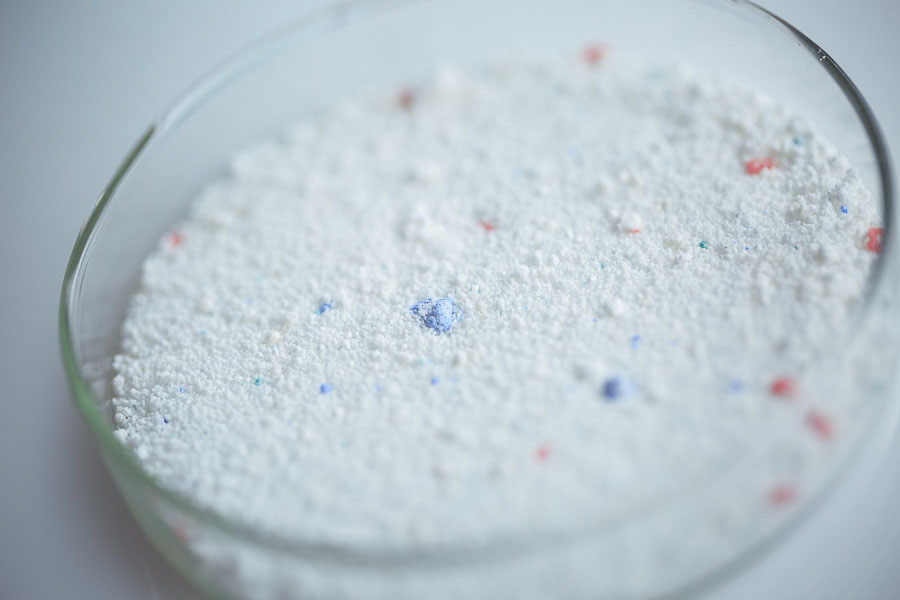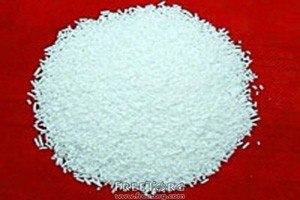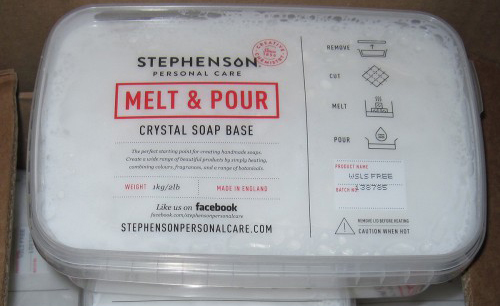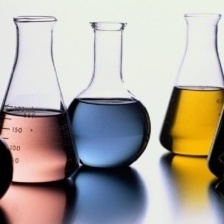What is a surfactant? Nonionic Pav
And paving for stone, concrete, brick, wood. With delivery throughout Russia!
Surfactants - chemical compounds, which, concentrating on the interface, cause a decrease in surface tension.
The first and most popular surfactant, which is already many thousands of years old, is soap. And every year, despite the competition of new detergents and cleaners, first on the basis of alkylbenzenesulfonate, and now others, more than 9 million tons of soap are consumed in the world. That soap remains the most common surfactant in the world.
Thanks to detergents, wetting, emulsifying, dispersing and other valuable properties, surfactants are widely used in the production of detergents and cleaners, cosmetics and pharmaceuticals. And also for the production of latex, rubber, polymers, in the extraction, transportation and processing of oil, etc.
Pavs are chemical cleaners, detergents, as well as plant protection products, textiles, leather and paper, building materials, and corrosion inhibitors. Most surfactants (about 60%) account for the production of detergents (SMS - synthetic detergents).
The main raw materials for the production of surfactants are products of oil refining and petrochemical synthesis: low molecular weight and higher paraffins, olefins, synthetic fatty acids, higher fatty alcohols, alkyl derivatives of benzene and phenol, etc.
Synthetic surface-active substances (surfactants) are divided into 4 classes:
- anionic surfactants - compounds that dissociate in aqueous solutions with the formation of anions that cause surface activity. Among them, the most important are alkylbenzene sulfonate, sulfates and sulfonates of fatty acids;
- cationic surfactants - compounds that dissociate in an aqueous solution with the formation of cations that determine surface activity. Among cationic surfactants, quaternary ammonium compounds, imidazalines, fatty amines are of greatest importance.
- amphoteric (ampholytic) surfactants - compounds which, in aqueous solutions, depending on the pH of the medium, are differently ionized and act — in an acidic solution they exhibit the properties of cationic surfactants, and in an alkaline solution they exhibit the properties of cationic surfactants. The main amphoteric surfactants are alkyl betaines, alkylaminocarboxylic acids, derivatives of alkyl imidazolines, alkylaminoalkanesulfonates.
- nonionic surfactants - compounds that, in full accordance with the name, dissolve in water without ionizing. The solubility of nonionic surfactants in water is determined by the presence of functional groups. As a rule, they form nitrates in an aqueous solution due to the occurrence of hydrogen bonds between water molecules and oxygen atoms of the polyethylene glycol part of the surfactant molecule. Nonionic surfactants include: polyglycol ethers of fatty alcohols and acids, polyglycol ethers of fatty acid amides, acylated or alkylated polyglycol ethers of alkylamides.
Synthetic detergents
The main types of surfactants used in the composition of SMS are linear alkyl chain benzene sulfonates (LABS) and C12-C15 alcohol derivatives (ethoxylates, sulfates, alcohol ethoxysulfates). LABS and alcohol sulfates, along with soap, belong to anionic surfactantalcohol ethoxylates to non-ionic surfactants.The second important type of surfactant for SMS is nonionic surfactantsobtained by hydroxyethylation of higher fatty alcohols or alkyl phenols.
Nonionic surfactants, as a rule, are superior to anionic surfactants in both cleaning and degreasing action and, depending on the profile of use, emulsify more or less oil and fat. Also, nonionic surfactants, due to the variability of their base and the degree of hydroxyethylation or propoxylation, can be ideally tailored to a specific task.
The most commonly used non-ionic surfactants are fatty alcohol oxyethylates. Because ethoxylates based on long chain alcohols (C12-C15) are used in CMC laundries due to their better washing ability, it is preferable to use ethoxylates based on short chain alcohols (C9-C11) to clean hard surfaces. These ethoxylates have a better wetting ability and a wetting angle in relation to hard surfaces.
Cosmetics
Surfactant is widely used in cosmetics. - This is shampoo, liquid soap, rinse, hair dye and balms for ear and hair after washing. Pavas are also cosmetic creams for the face, body, hands, including therapeutic and prophylactic actions. As the main surfactants, anionic substances (alkyl sulfates and alkyl ether sulfates) are used, which provide a sufficient washing effect and foaming when they are gentle on the skin and hair.
Alkylolamides, glycol ethers of fatty alcohols are used as solubilizers for the introduction of perfumes and other hydrophobic components (oils, biologically active substances).
Cationic, non-ionic surfactants, beta-ins are used as conditioning agents that remove static electricity charges and facilitate combing of dry and wet hair.
Amphoteric surfactants in combination with anionic surfactants improve foaming ability and increase the safety of formulations, and when combined with cationic polymers, they enhance the positive effect of silicones and polymers on hair and skin. These derivatives are obtained from natural raw materials, so they are quite expensive components. Betaine derivatives (cocaminopropyl betaine) are most commonly used.
Most effective antistatic are cationic surfactants - quaternary ammonium compounds, although there are problems of incompatibility with anionic surfactants. However, in a mixture with non-ionic and amphoteric substances, it is possible to achieve the desired effect and maintain the stability of the finished product.
Surfactants (Surfactant) are chemical compounds that, when concentrated on the interface, cause a decrease in surface tension.
The main quantitative characteristic of a surfactant is surface activity — the ability of a substance to reduce surface tension at the interface is a derivative of surface tension with respect to surfactant concentration when C tends to zero. However, surfactants have a solubility limit (the so-called critical micelle concentration or CMC), with the achievement of which, when a surfactant is added to the solution, the concentration at the phase boundary remains constant, but at the same time, the surfactant molecules self-organize in the bulk solution (micelle formation or aggregation). As a result of such aggregation, so-called micelles are formed. A distinctive feature of micelle formation is the clouding of a surfactant solution. During micelle formation, aqueous surfactant solutions also acquire a bluish tint (gelatinous tint) due to the refraction of light by micelles.
- Methods for determining CMC:
- Surface tension method
- Method for measuring contact angle with tv. or liquid surface (Contact angle)
- Spin Drop / Spinning Drop Method
Surfactant structure
Classification of surfactants
- Ionogenic surfactants
- Cationic surfactants
- Anionic surfactants
- Amphoteric
- Nonionic surfactants
- Alkyl polyglucosides
- Alkylpolyethoxylates
The effect of surfactants on environmental components
Surfactants are divided into those that are rapidly destroyed in the environment and those that are not destroyed and can accumulate in organisms in unacceptable concentrations. One of the main negative effects of surfactants in the environment is a decrease in surface tension. For example, in the ocean, a change in surface tension leads to a decrease in the retention rate of CO 2 and oxygen in the mass of water. Only a few surfactants are considered safe (alkyl polyglucosides), since carbohydrates are the products of their degradation. However, during the adsorption of surfactants on the surface of particles of earth / sand, the degree / rate of their degradation decreases many times. Since almost all surfactants used in industry and households have positive adsorption on particles of earth, sand, clay, under normal conditions they can release (desorb) heavy metal ions held by these particles, and thereby increase the risk of these substances getting into human organism.
Areas of use
Bibliography
- Abramzon A.A., Gaevoy G.M. (ed.) Surfactants. - L .: Chemistry, 1979.- 376 p.
- Parshikova T.V. Surfactants as a factor in the regulation of algae development. - Kiev: Phytosociocenter, 2004 .-- 276 p. (in Ukrainian) ISBN 966-306-083-8.
- Ostroumov S.A. Biological effects when exposed to surfactants on organisms. - M .: MAKS-Press, 2001 .-- 334 p. ISBN 5-317-00323-7.
- Stavskaya S. S., Udod V. M., Taranova L. A., Krivets I. A. Microbiological treatment of water from surfactants. - Kiev: Science. Dumka, 1988 .-- 184 p. ISBN 5-12-000245-5.
see also
Wikimedia Foundation. 2010.
See what “Surfactants” are in other dictionaries:
- (a. surfactants; N. grenzflachenaktive Stoffe, oberflachenaktive Stoffe; F. substances tensio actives; and. surfac tantes), substances with an asymmetric mol. structure, molecules have a diphilic structure, i.e. contain lyophilic and ... ... Geological Encyclopedia
Substances that can accumulate (thicken) on the contact surface of two bodies, called the interface, or interfacial surface. On the interface P. and. at. form a layer of high concentration adsorption ... ... Great Soviet Encyclopedia
Surface active substances (surfactants) detergents - substances that reduce surface tension. Having an effect on the boundary layers of cells, they disrupt the functions of the cytoplasmic membrane and, as a result, are capable of inhibiting growth ... ... Dictionary of Microbiology
Substances capable of adsorbing on the interface of two phases, lowering its surface tension. To P. a. at. organic compounds with an asymmetric mol. structure, molecules to ryh contain at. groups that differ sharply in character ... ... Physical Encyclopedia
- (SAS) chemical compounds capable of adsorbing at the phase boundary, one of which is usually water, and reduce surface tension. Surfactant molecules consist of a hydrocarbon radical (from 4 to 20 CH2 groups) and a polar group (OH, COOH, ... ... Big Encyclopedic Dictionary
surfactants - Surfactant Substances that are capable of adsorbing on the interface and cause a decrease in surface. (interphase) tension. Typical surfactants - organic. compounds, molecules to ryh contain lyophilic and lyophobic (usually hydrophilic and hydrophobic) atoms ... Technical Translator Reference
Surfactants. - 0.10.4.2. Surfactants. It is allowed to use surfactants in accordance with title \u003d Roads for the preparation of asphalt mixtures. A source … Glossary of terms of normative and technical documentation
surfactants - abbr. Surfactants Surfactants (detergents) - substances adsorbed on the interface and causing a decrease in interfacial surface tension. General chemistry: textbook / A. V. Zholinin ... Chemical terms
surfactants - See surface active substances (surfactants) ... Encyclopedic Dictionary of Metallurgy
surfactants - Surfactants - substances that can concentrate on the interface and reduce surface (interfacial) tension. They have wetting, emulsifying, washing, and other valuable properties. They are divided into ionic and nonionic. Among ... ... Textile Glossary
As the name implies, the surfactant somehow reacts with the surface of substances. Everyone knows how difficult, if not impossible, to wash grease, grease, or oil from your hands with ordinary water without using soap or solvents. All because water molecules and fat molecules do not interact with each other at all, do not cling to each other. This is where surfactants come into play.
The fact is that a surfactant molecule contains both hydrophilic (water-loving) and hydrophobic (water-fearing) components, that is, a surfactant molecule can attach to one side of a fat molecule and the other to a water molecule. Thus, the surfactant appears to be a bridge between two substances, previously not interacting with each other.
However, these are not all of their properties. At the same time, surfactant molecules are introduced into the surface layer of pollution and reduce the forces of mutual attraction between the pollution molecules, that is, they reduce surface tension. Separate particles of dirt come off from each other and are washed off by water.
A classic example of a surfactant is ordinary soap, yes, it is an ordinary soap from the factory, and not some handmade soap. But also surfactants are synthetic detergents (and which of them are not synthetic?), Alcohols, carboxylic acids, ammonia derivatives - amines, etc.
Let's look at the soap from the other side. We are constantly scared by the surfactants that are part of detergents, creams, and pastes. Everyone is afraid of surfactants, everyone is striving for natural cosmetics, and here again, the usual soap, familiar from childhood, is surfactant. They used it all their lives and did not know. What does ordinary soap consist of and where did it come from?
Detergents in the form of soap were known in ancient Egypt, in the civilization of Sumer and Babylon. About three thousand years BC people already used soap. Initially, it is known that oil perfectly cleans dirt - wipe your dirty hands with sunflower oil and the dirt will easily come off. Or take a hot kebab with your dirty hand and all the dirt on your fingers will move away. If you add ash or sand to the melted fat, you will get a beautiful primitive scrub or prehistoric soap. 
In 1808, the French chemist Michel Eugene Chevreul, at the request of the owners of the textile factory, established the composition of the soap. As a result of the analysis, it turned out that soap is the sodium salt of the highest fatty (carboxylic) acid. The main component of solid soap at the moment is a mixture of soluble salts of higher fatty acids. Usually it is sodium, less often - potassium and ammonium salts of acids such as stearic, palmitic, myristic, lauric and oleic. So much for the surfactants.
Now soap is made in factories as follows - fats, animal and vegetable, and even synthetic, are heated in special boilers and saponified with caustic alkali, as a result, alkali metal salts and alcohols are formed. A homogeneous viscous liquid is obtained, which, when cooled, hardens and turns into a laundry soap - this is soap and glycerin. There is also sound, sawn, sodium, potassium soap. But these are already features. This is a surfactant, natural. More precisely, one of many species. In addition to natural ones, there are synthetic ones, which cause complaints.
Surfactants themselves have a different classification, the main one is the division into anionic, cationic, amphoteric and nonionic surfactants, however, this classification also does not mean anything to an ordinary person. This classification is convenient for chemists, and is associated with chemical reactions, ions and molecules.
You can also separate them according to the nature of use: detergents, emulsifiers, wetting agents, solubilizers. In general, surfactants are used not only in detergents. Wetting, solubilization, emulsification - all these processes are stages of a washing action. Any surfactant, to one degree or another, is at the same time a wetting agent, a solubilizer, an emulsifier, and a detergent. But, at the same time, different surfactants show different effectiveness at different stages of the washing action.
By all of us, or almost all of us, our favorite chocolate, and ice cream, cookies, sauces, often contain lecithin - it is a surfactant in the form of an emulsifier. Emulsifiers are substances that stabilize emulsions from immiscible liquids.
Wetting agents are substances that cause the grinding of solids into small particles or of the liquid phase into small droplets. Wetting is the first phase of the washing action, when the contamination breaks up into separate particles or droplets and is subsequently enveloped with a surfactant (solubilizes) and is removed with water.
Solubilizers are substances that help increase the dissolution of particles of another substance that is poorly soluble in a given liquid medium. Solubilizer molecules encircle a poorly soluble particle in a given medium and form a so-called micelle around it. The micelle itself has an affinity for the solvent medium and therefore dissolves in it, providing the dissolution of the initially insoluble particles in it.
Using surfactants as a detergent is just the tip of the iceberg of organic chemistry. They are used in the textile and leather industries, paint and varnish and paper, metallurgy and oil production, in construction, agriculture and food industry, medicine, heat power ... In general, it is easier to find a sphere where they are not used than to list everything else.
Let’s now think about how they can be dangerous. 
What surfactants are fraught with
The first danger that everyone is talking about is that our skin is a natural barrier between us and the environment, a protective film of fats is formed on it that harmful bacteria do not allow. Of course, a surfactant, and soap in particular, first rinses off the protective layer from the skin. Dried and fat-free skin ages faster and is prone to various sores. Penetration of surfactants into deeper layers of the skin due to improper concentration and composition can lead to allergic reactions to other components of the detergent due to a decrease in the barrier functions of the skin. According to the standards established by GOST, the protective layer should be restored after 4 hours, after the use of surfactants, however, who checks this. Without surfactant we will not wash away the dirt, with surfactant we will wash away the protective layer.The second danger directly to humans comes from surfactants already washed into the sewer. Many synthetic detergents, unlike soaps, are not subject to natural biochemical decomposition and are not delayed by filtering units. Of course, according to the law of meanness, the most resistant to destruction surfactants are the cheapest. Aqueous surfactant solutions constantly flow into drains from a variety of sources, from housewives washing machines to fertilizers from the fields. Everything ends up in the water. Despite the fact that more and more attention is paid to wastewater treatment from surfactants, treatment plants do not cope well with the removal of surfactants. Thus, they can return to people already in drinking water and accumulate in organisms in unacceptable concentrations.
The third danger is environmental, perhaps the most unpleasant, but also the most inconspicuous. Due to the low decomposition rate of surfactants, the harmful effects of their effects on nature and living organisms are unpredictable. Wastewater containing surfactant products can cause intensive plant growth, which leads to pollution of previously clean reservoirs: as plants die out, their decay begins and oxygen depleted in water, which in turn worsens the conditions for the existence of other life forms in the water. Surfactants can be adsorbed on particles of earth, sand, clay, and release heavy metal ions held by these particles, and thereby increase the risk of these substances entering the human body. Their ability to lower surface tension in the oceans leads to a decrease in the retention rate of CO2 and oxygen in the mass of water.
They try to clean the wastewater from surfactants in different ways - converting surfactants into foam, adsorption with activated carbon, using ion-exchange resins, neutralizing with cationic substances, etc. These methods are expensive and not effective enough, and most likely are not used in Russia - you saw those sedimentation tanks ? Now it is believed that it is preferable to clean in sumps (aeration tanks) and in vivo (in water bodies) by biological oxidation under the influence of bacteria that are part of activated sludge.
In relation to this process, surfactants are usually divided into “soft” and “hard” ones. Hard surfactants are practically not produced at present (some alkylbenzenesulfonates and ethoxylated isooctylphenols). Theoretically, biodegradation goes before the transformation of soft surfactants into water and carbon dioxide, the problem is reduced only to the time of oxidation. If oxidation occurs slowly, the surfactant manages to produce a harmful effect on living organisms and the natural environment.
Currently, the most common surfactant in synthetic detergents is alkyl benzosulfonate. The group of anionic surfactants also includes alkanesulfonate (SAS), alkyl sulfate (FAS) and volatile alkyl sulfate (FAES). FAS can be obtained from plant materials, such as rapeseed oil, or coconut oil.
Cationic surfactants are especially actively used in synthetic products for gentle washing, as they play the role of a lubricant. Nonionic surfactants are absolutely immune to water hardness, demonstrate high efficiency even at low concentrations and low washing temperatures, do not form a lot of foam and prevent darkening of the laundry. By the way, non-inogenic surfactants decompose more easily than anionic surfactants.
Saponin obtained from soap dish or washing nuts (Waschnussen) belongs to nonionic surfactants. Another example of a nonionic surfactant is sugar alkyl polyglucoside (APG), extracted from renewable raw materials: corn, sugarcane and coconut. APG is biodegradable and has excellent skin compatibility. These surfactants are used in natural washing powders.
According to the decrease in the irritating effect on human skin and eyes, surfactants can be arranged in the following row: cationic\u003e anionic\u003e nonionic. This chain is also valid for toxicity: the most toxic are cationic surfactants, the less toxic are anionic and the least nonionic surfactants. Incidentally, cationic surfactants have an interesting property - they have a bactericidal effect, therefore, they are widely used in medicine, and cetylpyridinium chloride surfactants have become a drug in general.
At present, laws have been passed permitting the production and use of surfactants for detergents biodegradable by at least 80%. It is believed that in washing powder no more than 5% surfactant is sufficient for it to wash well. Only a few surfactants are absolutely safe (alkyl polyglucosides), since the products of their degradation are carbohydrates. 
Do not forget that, as a rule, in shampoos, detergents. It contains not one surfactant alone, but their whole composition there. In addition to the main surfactant, Co-surfactants are included in the ratio 1: 3, 1: 4. If the main surfactants are usually anionic, then various amphoteric, nonionic, and anionic surfactants act as Co-surfactants. So, we come to our topic - what is a soap base and what does a surfactant have to do with it. Now we already understand that there can be no soap base without surfactants in principle. Very often they write on a soap basis - FREE SLS, FREE SLES. It is interesting what kind of animals these are, it is clear that they are surfactants, but why without them.
Here we come to the creation of a soap base. In fact, the soap base has the same relation to soap as processed cheese to cheese. It is called a soap product and is made from synthetic surfactants, mainly from petroleum products (sodium lauryl sulfate), etc.
Unlike industrial-made soaps, handmade soaps are worse washed because the ingredients in the soap base are more gentle and softer (!). For the same reason, it expends faster than industrial soap of the same weight.
SLS and SLES - this is sodium lauryl sulfate and sodium laureth sulfate, respectively - are present in most detergents and cosmetics. SLES is a safer derivative of SLS. Sodium lauryl sulfate (SLS) can cause skin irritation in some people through prolonged contact, but even carcinogenic or embryotoxic effects are not detected. It is recognized as safe in cleansers that are washed off with water (shampoos, cleansing gels, foams, etc.). Products containing any of these ingredients are not recommended for people with acne, dermatitis, dry skin or hair loss. SLES (sodium laureth sulfate) acts less annoyingly than sodium lauryl sulfate, but leads to stronger drying, which can be avoided by thorough washing. 
Total
So, after so many terms and sets of words, let's summarize the final result. Surfactants have been greatly demonized recently, most people after such active propaganda do not realize that the number of surfactants is actually huge and we all use them, one way or another. Classic soap is essentially an anionic surfactant and quite tough. Natural surfactants are safer than synthetic ones, but natural ones in any shampoos and soaps sold in different stores are not contained (in any case, as the basis of a washing composition), although they exist in nature.To obtain sufficient washing action, surfactants are introduced into the composition of cosmetic detergent in an amount of at least 10%, the optimum content is 12-14%. When choosing a product (shampoo, soap, detergent, powder), you can focus on the label. However, one should not forget that the percentage of surfactants introduced is put quite rarely, and in some cases, surfactants are generally indicated by a digital code without indicating the name - if the composition of the funds is patented or is a trade secret.
In fact, only soap root and saponins (soap substances) from plants can be recognized as natural detergents. If you search online for the sale of surfactants, you can often find oat, apple surfactants, sugar and coconut - these are all natural or partially-natural surfactants that are used in home cosmetics, but not on an industrial scale.
on several orders of magnitude higher than in the liquid volume, therefore, even with a negligible content in water (0.01-0.1% by weight), surfactants can reduce surface tension water at the border with air from 72.8 · 10 -3 to 25 · 10 -3 J / m 2, i.e. almost tosurface tension hydrocarbon liquids. A similar phenomenon takes place at the boundary of an aqueous solution of a surfactant - a hydrocarbon liquid, which creates the prerequisites for the formation of emulsions.
The main quantitative characteristic of surfactants is the ability of a substance to reduce surface tension at the interface is the derivative of surface tension with respect to surfactant concentration as C tends to zero.
Surfactants may be in the volume of the liquid phase
- or in the form of individual molecules (truly soluble surfactants),
-or join in groups of several tens of molecules - The maximum concentration of surfactants in a solution at which micelle formation begins is called).
Surfactant structure
As a rule, surfactants are organic compounds having amphiphilic structure, that is, their molecules have a polar part, a hydrophilic component (functional groups —OH, —COOH, —SOOOH, —O—, etc., or, more often, their salts — ONa, —COONa, —SOOONa and etc.) and non-polar (hydrocarbon) part, hydrophobic component. An example of a surfactant is ordinary soap (a mixture of sodium salts of fatty carboxylic acids - oleate, sodium stearate, etc.) and SMS(synthetic detergents), as well as alcohols, carboxylic acids, amines, etc.
Classification of surfactants
- Ionogenic surfactants
- Cationic surfactants
- Anionic surfactants
- Amphoteric
- Nonionic surfactants
- Alkyl polyglucosides
- Alkylpolyethoxylates
Anionic surfactants
- contain one or more polar groups in the molecule and dissociate in an aqueous solution with the formation of long-chain anions that determine their surface activity. These are the groups: COOH (M), OSO 2 OH (M), SO 3 H (M), where M is a metal (mono-, di- or trivalent). The hydrophobic part of the molecule is usually represented by limiting or unsaturated aliphatic chains or alkyl aromatic radicals.
In anionic surfactants, the cation may be not only metal, but also an organic base. Often it is di- or triethanolamine. Surface activity begins to appear when the length of the hydrocarbon hydrophobic chain C 8 and with increasing chain length increases until the complete loss of solubility of surfactants in water. Depending on the structure of intermediate functional groups and the hydrophilicity of the polar part of the molecule, the length of the hydrocarbon part can reach C 18
.
Cationic surfactants
- dissociate in an aqueous solution with the formation of a surface-active cation with a long hydrophobic chain and an anion (usually a halide, sometimes an anion of sulfuric or phosphoric acid).
Among cationic surfactants, nitrogen-containing compounds predominate; Nitrogen-free substances are also used: sulfonium + X- and sulfoxonium + X-, phosphonium + X-, arsonium + X-, iodonium compounds.
Cationic surfactants reduce surface tension less than anionic surfactants, but they chemically interact with the surface of the adsorbent, e.g. with cellular proteins of bacteria, causing a bactericidal effect.
Ampholytic surfactants
- depending on the pH, they exhibit the properties of cationic or anionic surfactants.
They contain a hydrophilic radical and a hydrophobic moiety in the molecule, capable of being an acceptor or proton donor depending on the pH of the solution. Typically, these surfactants include one or more basic and acidic groups, and may also contain a nonionic polyglycol group. At some pH values, called. isoelectric point, surfactants exist in the form of zwitterions. The ionization constants of the acid and basic groups of truly soluble amphoteric surfactants are very low, but cation-oriented and anion-oriented zwitter ions are most often found. The primary, secondary or tertiary ammonium group, the remainder of the pyridine or imidazoline usually serves as the cationic group. Instead of N m. S, P, As atoms, etc. Anionic groups are carboxyl, sulfonate, sulfonate or phosphate groups.
Nonionic PA
- high molecular weight compounds that do not form ions in an aqueous solution.
Their solubility is due to the presence in the molecules of hydrophilic ether and hydroxyl groups, most often a polyethylene glycol chain. When dissolved, hydrates are formed due to the formation of a hydrogen bond between the oxygen atoms of the polyethylene glycol residue and water molecules. Due to the breaking of the hydrogen bond with increasing temperature, the solubility of nonionic surfactants decreases, so for them the cloud point is top. the micellization temperature limit is an important indicator. Many compounds. Containing a mobile atom H (acids, alcohols, phenols, amines), reacting with ethylene oxide, form nonionic surfactants RO (C2H4O) nH. The polarity of one oxyethylene group is much less than the polarity of any acid group in anionic surfactants. Therefore, to give the molecule the required hydrophilicity and HLB value, depending on the hydrophobic radical, from 7 to 50 hydroxyethylene groups are required. A characteristic feature of nonionic surfactants is the liquid state and low foaming in aqueous solutions.
Nonionic surfactants combine well with other surfactants and are often included in formulations
Thanks to detergents, wetting, emulsifying, dispersing and other valuable properties, surfactants are widely used in the production of detergents and cleaners, cosmetics and pharmaceuticals. latexes, rubber. polymers, chemical plant protection products, textiles, leather and paper, building materials, corrosion inhibitors, in the extraction, transportation and processing of oil, etc. Most surfactants are used for the production of synthetic detergents (SMS).
Surfactants have relatively low toxicity to humans and animals. According to the degree of toxicity increase, surfactants can be distributed in the following order: nonionic, anionic, cationic. When exposed to the skin and mucous membranes, synthetic surfactants can be irritating and resorptive. It was found that compositions of anionic and nonionic compounds have a less pronounced biological and toxic effect. Nonionic surfactants reduce the adsorption of anionic substances and only in large doses can have a damaging effect on the skin. The greatest danger to surface-active substances and preparations based on them for people is their sensitizing effect, the ability to cause allergic reactions. Sensitization can occur in any way the surfactant enters the body.
Sources of surfactant release into the aquatic environment
Surfactants enter water bodies in significant quantities with household water (using synthetic detergents in the home) and industrial wastewater (textile, oil, chemical industry, synthetic rubber production), as well as with runoff from agricultural land (which are part of insecticides, fungicides, herbicides and defoliants as emulsifiers).
Surfactants are widely used in industry, agriculture, medicine and everyday life. The global production of surfactants is growing every year, and the share of nonionic substances in the total output is constantly growing. All types of surfactants are widely used in the preparation and use of synthetic polymers. The most important area of \u200b\u200bmicelle-forming surfactant consumption is the production of polymers by emulsion polymerization. The technological and physicochemical properties of the resulting latexes largely depend on the type and concentration of the selected surfactants (emulsifiers). Surfactants are also used in suspension polymerization. Usually, high molecular weight surfactants are used - water-soluble polymers (volivinyl alcohol, cellulose derivatives, vegetable glues, etc.). By mixing varnishes or liquid oil-tar compositions with water in the presence of emulsifiers, emulsions are obtained that are used in the manufacture of plastics, leather substitutes, non-woven materials, impregnated fabrics, water-borne paints, etc. High molecular weight water-soluble surfactants, in addition to use in the above technological. processes used as flocculants in various types of water treatment. With their help, suspended wastes are removed from wastewater, as well as from drinking water..
The information was borrowed from the following sources:
1) www.wikipedia.org
3) www.hydrodynamictechnology.com
Surfactants - chemical compounds, which, concentrating on the interface, cause a decrease in surface tension. This property of these substances is actively used in the manufacture of cleaners, detergents, cosmetics.
The first and most popular surfactant, which is already many thousands of years old, is soap. And every year, despite the competition of new detergents and cleaners, first on the basis of alkylbenzenesulfonate, and now others, more than 9 million tons of soap are consumed in the world. That soap remains the most common surfactant in the world.
Thanks to detergents, wetting, emulsifying, dispersing and other valuable properties, surfactants are widely used in the production of detergents and cleaners, cosmetics and pharmaceuticals. And also for the production of latex, rubber, polymers, in the extraction, transportation and processing of oil, etc.
Pavs are chemical cleaners, detergents, as well as plant protection products, textiles, leather and paper, building materials, and corrosion inhibitors. Most surfactants (about 60%) account for the production of detergents (SMS - synthetic detergents).
The main raw materials for the production of surfactants are products of oil refining and petrochemical synthesis: low molecular weight and higher paraffins, olefins, synthetic fatty acids, higher fatty alcohols, alkyl derivatives of benzene and phenol, etc.
Synthetic surface-active substances (surfactants) are divided into 4 classes:
- anionic surfactants - compounds that dissociate in aqueous solutions with the formation of anions that cause surface activity. Among them, the most important are alkylbenzene sulfonate, sulfates and sulfonates of fatty acids;
- cationic surfactants - compounds that dissociate in an aqueous solution with the formation of cations that determine surface activity. Among cationic surfactants, quaternary ammonium compounds, imidazalines, fatty amines are of greatest importance.
- amphoteric (ampholytic) surfactants - compounds which, in aqueous solutions, depending on the pH of the medium, are differently ionized and act — in an acidic solution they exhibit the properties of cationic surfactants, and in an alkaline solution they exhibit the properties of cationic surfactants. The main amphoteric surfactants are alkyl betaines, alkylaminocarboxylic acids, derivatives of alkyl imidazolines, alkylaminoalkanesulfonates.
- nonionic surfactants - compounds that, in full accordance with the name, dissolve in water without ionizing. The solubility of nonionic surfactants in water is determined by the presence of functional groups. As a rule, they form nitrates in an aqueous solution due to the occurrence of hydrogen bonds between water molecules and oxygen atoms of the polyethylene glycol part of the surfactant molecule. Nonionic surfactants include: polyglycol ethers of fatty alcohols and acids, polyglycol ethers of fatty acid amides, acylated or alkylated polyglycol ethers of alkylamides.
Synthetic detergents
The main types of surfactants used in the composition of SMS are linear alkyl chain benzene sulfonates (LABS) and C12-C15 alcohol derivatives (ethoxylates, sulfates, alcohol ethoxysulfates). LABS and alcohol sulfates, along with soap, belong to anionic surfactantalcohol ethoxylates to non-ionic surfactants.The second important type of surfactant for SMS is nonionic surfactantsobtained by hydroxyethylation of higher fatty alcohols or alkyl phenols.
Nonionic surfactants, as a rule, are superior to anionic surfactants in both cleaning and degreasing action and, depending on the profile of use, emulsify more or less oil and fat. Also, nonionic surfactants, due to the variability of their base and the degree of hydroxyethylation or propoxylation, can be ideally tailored to a specific task.
Cosmetics
Surfactant is widely used in cosmetics. - This is shampoo, liquid soap, rinse, hair dye and balms for ear and hair after washing. Pavas are also cosmetic creams for the face, body, hands, including therapeutic and prophylactic actions. As the main surfactants, anionic substances (alkyl sulfates and alkyl ether sulfates) are used, which provide a sufficient washing effect and foaming when they are gentle on the skin and hair.
Alkylolamides, glycol ethers of fatty alcohols are used as solubilizers for the introduction of perfumes and other hydrophobic components (oils, biologically active substances).
Cationic, non-ionic surfactants, beta-ins are used as conditioning agents that remove static electricity charges and facilitate combing of dry and wet hair.
Amphoteric surfactants in combination with anionic surfactants improve foaming ability and increase the safety of formulations, and when combined with cationic polymers, they enhance the positive effect of silicones and polymers on hair and skin. These derivatives are obtained from natural raw materials, so they are quite expensive components. Betaine derivatives (cocaminopropyl betaine) are most commonly used.
Most effective antistatic are cationic surfactants - quaternary ammonium compounds, although there are problems of incompatibility with anionic surfactants. However, in a mixture with non-ionic and amphoteric substances, it is possible to achieve the desired effect and maintain the stability of the finished product.


